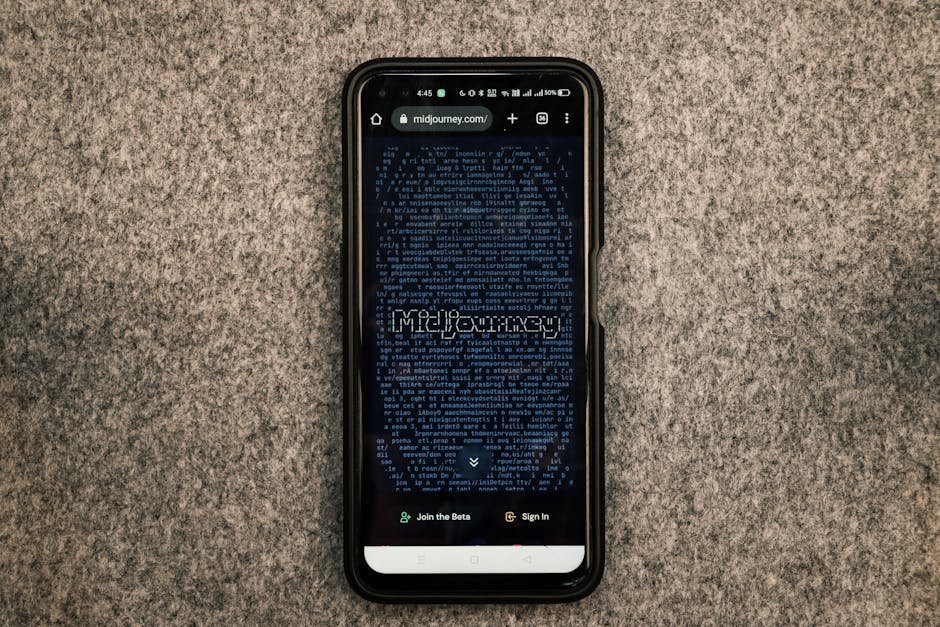Stepping into the world of sales development representatives (SDRs) and business development representatives (BDRs) at a fast-growing startup can feel like embarking on an exhilarating adventure. With a dynamic landscape full of opportunities, the journey starts with a pivotal milestone: the job interview. But fear not! Whether you’re a seasoned sales pro or a fresh face ready to dive in, preparing for these interviews doesn’t have to be daunting.
In this article, we’ll share friendly tips and essential strategies to help you shine in the spotlight, connect with startup culture, and showcase your unique skills. Let’s gear up and transform those interview jitters into a celebration of your potential!
Table of Contents
ToggleCrafting Your First Impression: The Perfect Resume and Cover Letter
When aiming for a Sales Development Representative (SDR) or Business Development Representative (BDR) role in a fast-paced startup, capturing attention with a polished resume and tailored cover letter is your first critical step. Start by highlighting relevant key skills such as lead generation, CRM proficiency, and excellent communication. Personalize each application by integrating the specific job description and company culture into your cover letter. This tells the recruiter you’ve done your homework and are truly passionate about their mission.
Optimize your resume with a sleek design and concise format. Use a summary section at the top to briefly outline your career objectives and achievements. Leverage this section to spotlight your most notable successes, like exceeding quarterly targets or spearheading innovative outreach campaigns. To present a clear, organized format, consider using a professional template; resources like Resume Genius and Indeed offer great options for tailoring your application to SDR/BDR roles.
| Essential Elements | Tips |
|---|---|
| Header | Include contact info and LinkedIn profile. |
| Professional Summary | Craft a compelling 2-3 sentence overview of your skills and achievements. |
| Experience | Focus on metrics and results, showing your impact with numbers. |
| Skills Section | Emphasize relevant SDR/BDR skills like CRM tools, cold calling, and email outreach. |
| Education | Include any completed degrees and relevant certifications. |
In your cover letter, adopt a conversational yet professional tone. Explain why you are passionate about the company and how your past experiences align with the SDR/BDR role’s responsibilities. Storytelling can be particularly effective here; narrate how you closed a difficult deal or contributed to a high-growth team’s success. Use action-oriented language and tailor each cover letter to the specific startup, showing your authentic enthusiasm and readiness to bring value.
Understanding the Fast-Paced Startup Ecosystem
- Networking Opportunities: Often facilitated through events, accelerators, and incubators.
- Access to Capital: Critical for startups, typically provided by angel investors, venture capitalists, and crowdfunding platforms.
- Educational Resources: Universities and specialized training programs that equip talent with the necessary skills.
- Support Systems: Legal, marketing, and technological support to help startups scale efficiently.
When preparing for an interview, it’s not just about knowing your potential employer but also about understanding how the ecosystem they’re part of operates and thrives. This can give you a distinct edge, demonstrating your readiness to adapt and contribute to the high-energy environment. Showing awareness of the ecosystem can set you apart as someone who’s not just job-hunting but is keenly aware and passionate about the startup world.
Mastering the Pitch: Articulate Your Value to Startups
- Know the Product: Thoroughly understand the startup’s product or service, and be ready to discuss how it solves customer pain points.
- Market Knowledge: Demonstrate awareness of the industry landscape and the company’s positioning. Mention competitors and your insights into what sets this startup apart.
- Metrics Mastery: Be prepared to discuss key performance indicators (KPIs) like lead conversion rates, pipeline velocity, and quota achievements. Use any prior experience to underline your understanding.
Presenting your past achievements in terms of hard numbers can make a compelling case. Here’s a simplified table to illustrate:
| Skill/Experience | Metric | Outcome |
|---|---|---|
| Lead Generation | 500 leads/month | Increased qualified leads by 20% |
| Cold Outreach | 100 calls/week | Secured 5 high-value appointments |
| Sales Pipeline Management | Reduced sales cycle by 15% | Boosted annual revenue by $50K |
Interviews at startups can be dynamic and often explore cultural fit as rigorously as technical skills. Use storytelling to convey your passion for the industry and the startup’s mission. Share anecdotes demonstrating your initiative, creative problem-solving skills, and ability to thrive in a fast-paced, evolving environment. Emphasize how you can be an active contributor to the startup’s growth trajectory.
Deep Dive into Product Knowledge and Market Fit
- Customer Pain Points: Know the common challenges your potential customers face and how the product alleviates these issues.
- Competitive Landscape: Be aware of your product’s competitors and its differentiators.
- Market Segmentation: Understand the primary industries and roles that benefit most from your product.
To provide actionable insights and impress your interviewers, familiarize yourself with the following:
| Feature | Customer Pain Point | Value Proposition |
|---|---|---|
| Automation | Wasted time on repetitive tasks | Increases efficiency |
| Analytics Dashboard | Lack of data insights | Informed decision-making |
| 24/7 Customer Support | Downtime and troubleshooting delays | Reliable, continuous assistance |
Mastering both product knowledge and market fit equips you to walk into any SDR/BDR interview with confidence. It transforms your responses from surface-level to insightful, showcasing your preparedness and dedication to understanding the customer journey.
Building Rapport: Engaging with Interviewers Like a Pro
- “Can you tell me more about the team dynamics?”
- “What’s the biggest challenge the team is currently facing?”
- “How does the company foster growth and development for its team members?”
A blend of professionalism and authenticity can go a long way. Smile, make eye contact, and use body language to convey enthusiasm. Remember, your goal is not just to get through the questions but to build a relationship. Use anecdotes that highlight your skills while also being relatable. For instance, discussing a specific time you went above and beyond in a previous role can illustrate your work ethic and commitment.
| Action | Purpose |
|---|---|
| Researching interviewer | Creates personalized talking points |
| Active listening | Shows respect and understanding |
| Asking open-ended questions | Encourages dialogue |
| Sharing anecdotes | Illustrates skills and relatability |
Navigating Behavioral Questions with Strategic Stories
Behavioral questions can often feel like navigating through a labyrinth, but preparing with strategic stories can be your compass. When an interviewer asks about a time you faced a challenge or how you handle rejection, they’re looking for more than your ability to sell—they want to gauge your resilience, resourcefulness, and cultural fit. Here’s how you can transform past experiences into compelling narratives:
- Identify Key Themes: Reflect on moments from your previous roles that highlight problem-solving, teamwork, and adaptability.
- Structure Your Stories: Use the STAR method (Situation, Task, Action, Result) to provide a clear and concise answer.
- Consistency is Key: Ensure that your stories align with the values and needs of the fast-growing startup you’re interviewing with.
Framing your stories effectively can be a game-changer. Think of how you can add a layer of relatability and authenticity, showing not just what you did, but why it mattered. Here’s a quick table to help you shape an impactful story:
| Aspect | Details |
|---|---|
| Situation | A challenging scenario or a unique problem you faced. |
| Task | What you were tasked to achieve or resolve. |
| Action | The steps you took, the strategies you implemented. |
| Result | The outcome of your actions, including any quantifiable success. |
By illustrating your experiences with vivid details and outcomes, you not only showcase your skills but also demonstrate your potential as a dynamic contributor to the startup’s growth. Remember, the power of storytelling lies in its ability to make your professional journey memorable and relatable to your interviewers.
Acing the Role Play: Demonstrate Your Sales Prowess
- Research: Know the ins and outs of the company you’re *selling to* in the role play. This includes familiarizing yourself with their products, needs, competition, and recent news.
- Effective Communication: Clear, concise, and confident communication can often make the difference. Practice delivering your pitch with enthusiasm and hone your ability to steer the conversation.
- Objection Handling: Role plays will test your ability to stay composed under pressure. Prepare for common objections and develop smart, empathetic responses that pivot back to the value proposition.
| Element | Description |
|---|---|
| Opening Line | Craft a strong and engaging opener to grab attention. |
| Value Proposition | Quickly outline the unique value your solution brings. |
| Client’s Pain Points | Identify and elaborate on the client’s specific challenges. |
| Closing Statement | End with a persuasive call to action or next step. |
Imagine you’re on a call with a high-profile client. Navigate the scenario with a tailored approach, absorbing every nuance of the conversation. Your role play isn’t just a test; it’s an opportunity to wow the interviewers with your strategic thinking and sales prowess. Remember, practice makes perfect! Transform nerves into positive energy and let your personality shine through every interaction.
Post-Interview Excellence: Follow-Up Etiquette and Next Steps
After acing your SDR/BDR interview at a fast-growing startup, your journey doesn’t end there. Navigating the post-interview stage with finesse can set you apart and keep you on the radar of potential employers. Here are some key steps:
- Thank You Email: Within 24 hours, send a personalized thank you email. Mention specific topics discussed during the interview to show attentiveness. Express your enthusiasm about the role and the company.
- Availability for Further Discussions: Communicate your availability for any follow-up interviews or further discussions. This shows your eagerness and flexibility.
- Connect on LinkedIn: If you haven’t already, connect with your interviewers on LinkedIn. Send a brief, thoughtful message reflecting on the interview discussion and expressing your interest in staying in touch.
Wondering about typical next steps after your follow-up? Here’s what you can expect and how to prepare:
| Step | Action |
|---|---|
| Second Interview | Prepare for more in-depth questions or a potential skills assessment. |
| References Check | Ensure your references are aware they might be contacted and are ready to provide positive feedback. |
| Job Offer | Be ready to discuss and negotiate terms such as salary, benefits, and start date. |
Remember, the follow-up phase is not just about sealing the deal; it’s also your opportunity to demonstrate *grace*, *professionalism*, and an earnest desire to become part of their dynamic team. So, go ahead and shine, even after the interview!
Frequently Asked Questions
What skills should I highlight during my SDR/BDR interview?
When preparing for your SDR/BDR interview, emphasize skills such as communication, adaptability, and problem-solving. Additionally, showcase your familiarity with CRM software, lead generation techniques, and sales processes. Demonstrating your ability to learn quickly and thrive in a fast-paced environment is crucial for success in a startup.
How can I research the startup before the interview?
To effectively research the startup, explore their website, social media profiles, and recent news articles. Understand their target market, products or services, and company culture. Check out reviews on platforms like Glassdoor to gain insights from former employees and identify what sets the company apart from competitors.
What common interview questions should I prepare for?
Prepare for questions such as:
- “How do you handle rejection in sales?”
- “Describe your process for qualifying leads.”
- “What interests you about working at our startup?”
Being ready with specific examples from past experiences will help you articulate your responses effectively.
How can I demonstrate my interest in the company during the interview?
Show your enthusiasm by discussing the startup’s mission, values, and products. You can bring up specific initiatives or recent accomplishments that resonate with you. Asking thoughtful questions about the company’s future plans and sales strategy can also demonstrate your genuine interest.
What should I wear to an SDR/BDR interview at a startup?
Startup dress codes often vary, but it’s generally safe to opt for business casual attire. Aim for a polished appearance while remaining comfortable. If you’re unsure, consider reaching out to the recruiter for clarification on the dress code or check the startup’s social media to get a sense of their office culture.
Final Thoughts
As you gear up to tackle SDR and BDR job interviews in the vibrant and dynamic world of fast-growing startups, remember to embrace the journey with both enthusiasm and optimism. This is not just a chance to showcase your skills and experience; it’s an opportunity to connect with potential teammates who share your passion for innovation and growth. Each interview is a step into the unknown, a new adventure filled with promise and possibility.
So, polish that resume, practice your pitch, and don’t forget to infuse a bit of your unique personality into every conversation. Be curious, ask questions, and let your genuine interest in the company’s mission shine through. The road may be challenging, but with the right preparation and mindset, you’ll not only impress your future employers—you’ll also discover pathways that could lead to your dream career.
Thank you for reading; now go out there and make your mark in the startup landscape. We believe in you! ✨







